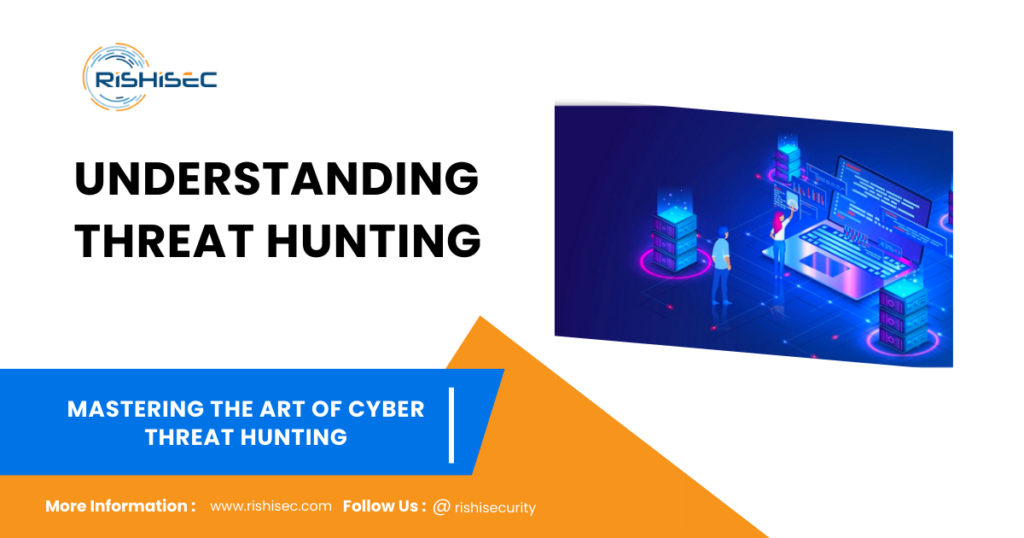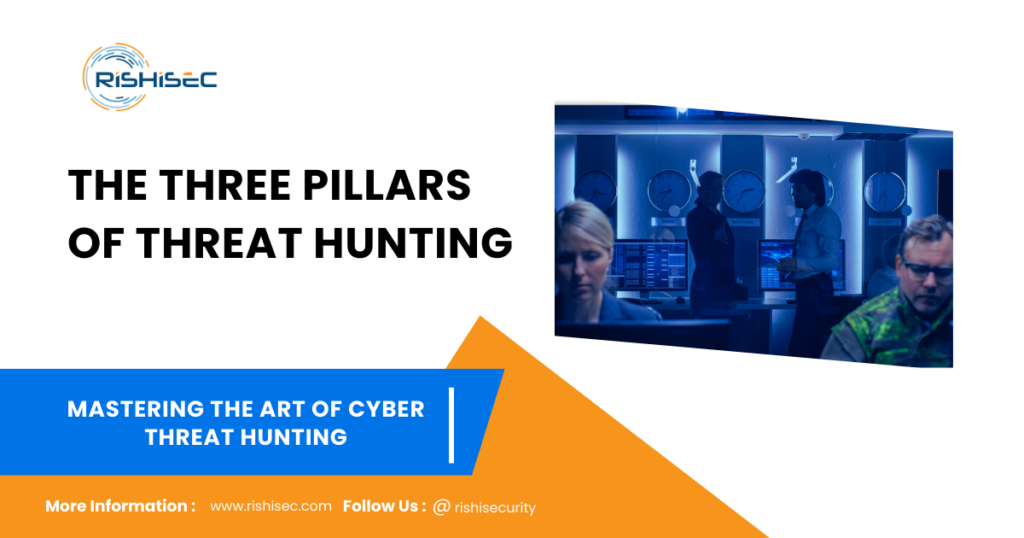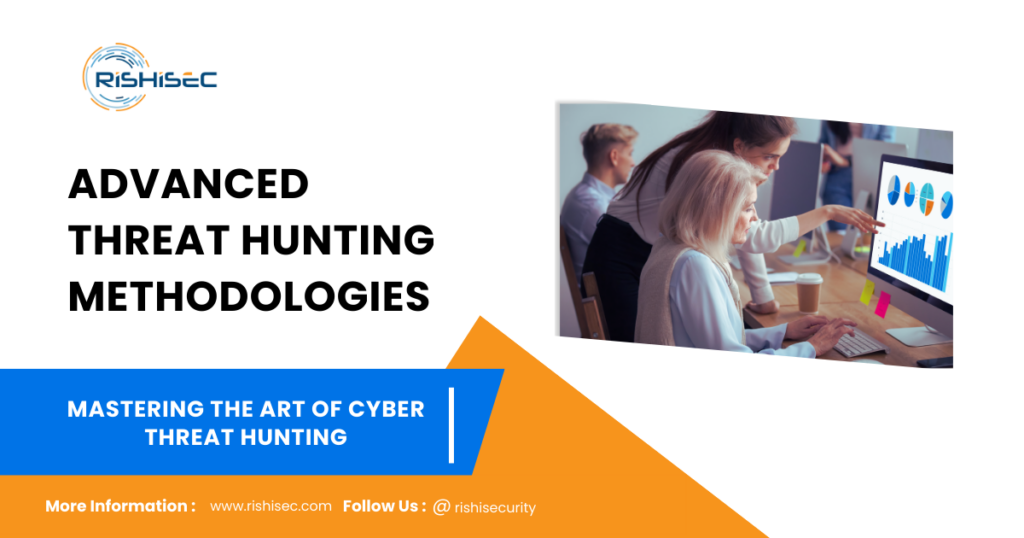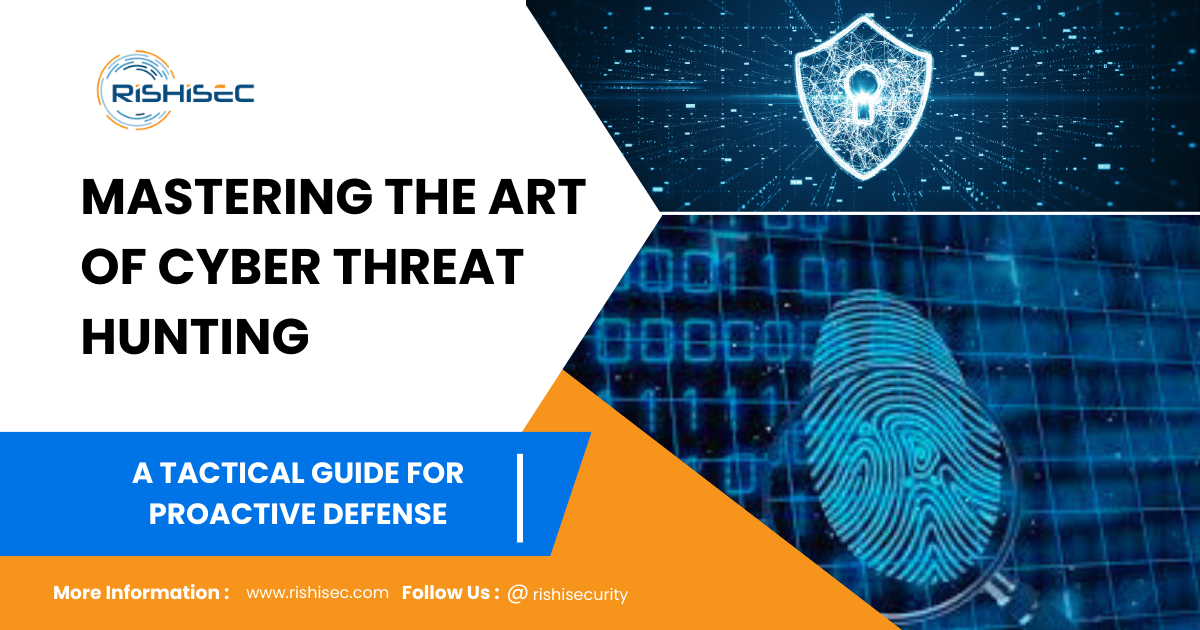Contents
- 1 Essential Strategies for Effective Cyber Threat Hunting
- 2 Understanding Threat Hunting:
- 3 What is Threat Hunting?
- 4 The Core Principles of Effective Threat Hunting:
- 5 The Three Pillars of Threat Hunting:
- 6 Tactical Steps for Implementing Threat Hunting:
- 7 Evaluating Threat Hunting Solutions:
- 8 Best Practices for Effective Threat Hunting:
- 9 Common Challenges and Solutions in Threat Hunting:
- 10 Case Studies and Real-World Applications:
- 11 Building a Skilled Threat Hunting Team:
- 12 Advanced Threat Hunting Methodologies:
- 13 Tactical Tools and Technologies:
- 14 Practical Threat Hunting Exercises:
- 15 Documenting and Sharing Findings:
- 16 Conclusion:
Essential Strategies for Effective Cyber Threat Hunting
In the ever-evolving landscape of cybersecurity, staying one step ahead of potential threats is paramount. Threat hunting emerges as a proactive approach, empowering organizations to identify and neutralize threats before they escalate into full-blown attacks. This comprehensive guide delves deep into the world of threat hunting, offering actionable insights and strategies to enhance your cybersecurity posture. Along the way, you’ll be mastering the art of cyber threat hunting, equipping yourself with the expertise and tools needed to outpace adversaries and safeguard your organization.
Understanding Threat Hunting:

What is Threat Hunting?
Threat hunting is an active cybersecurity practice aimed at discovering malicious activities that have bypassed existing security measures. It involves a combination of manual sleuthing and sophisticated analytics to unearth hidden threats within an organization’s digital environment.
The Core Principles of Effective Threat Hunting:
- Proactivity: Moving beyond reactive security measures to actively seek out potential threats.
- Hypothesis-Driven Approach: Formulating educated guesses based on the latest threat intelligence and anomalies within the system.
- Iterative Learning: Continuously refining techniques and strategies based on the outcomes of previous hunts.
The Three Pillars of Threat Hunting:

- Technology: Utilizing advanced tools and technologies for comprehensive data analysis and anomaly detection.
- Techniques: Developing and applying systematic approaches to uncover hidden threats.
- People: Leveraging the expertise and intuition of skilled cybersecurity professionals.
Tactical Steps for Implementing Threat Hunting:
- Establish a Baseline: Understand normal network behavior to effectively identify anomalies.
- Develop Hypotheses: Leverage threat intelligence to formulate potential threat scenarios.
- Utilize the Right Tools: Employ a suite of tools for data aggregation, analysis, and anomaly detection.
- Investigate and Analyze: Conduct deep-dive investigations to confirm or refute hypotheses.
- Document and Learn: Record findings and use them to refine future threat hunting efforts.
Evaluating Threat Hunting Solutions:
When selecting a threat hunting platform or service, consider the following factors:
- Integration Capability: Ensure compatibility with your existing security infrastructure.
- Scalability: The solution should grow with your organization and adapt to evolving threats.
- User-Friendliness: Look for intuitive interfaces and comprehensive support resources.
- Real-Time Analytics: Opt for solutions offering real-time data analysis for timely threat detection.
- Customization: The ability to tailor the solution to your specific organizational needs is crucial.
Best Practices for Effective Threat Hunting:
- Continuous Improvement: Stay abreast of the latest cybersecurity trends and threats.
- Collaborative Effort: Foster a culture of collaboration between IT, security, and other relevant departments.
- Comprehensive Documentation: Maintain detailed records of all threat hunting activities and findings.
Common Challenges and Solutions in Threat Hunting:
- Skill Gaps: Invest in training and development to enhance your team’s threat hunting capabilities.
- Data Overload: Implement robust data management strategies to efficiently process and analyze large datasets.
- False Positives: Refine detection algorithms and validation processes to reduce false alarms.
Case Studies and Real-World Applications:
Illustrate the practical application of threat hunting with real-world examples, detailing the challenges faced, strategies employed, and outcomes achieved.
Building a Skilled Threat Hunting Team:
- Team Composition: Assemble a diverse team with skills in data analysis, cybersecurity, network engineering, and forensic investigation. Include members who understand the IT infrastructure and those who can think like attackers.
- Continuous Training: Cyber threats evolve rapidly; so should your team’s skills. Invest in ongoing training programs, workshops, and certifications to keep your team updated with the latest threat hunting methodologies and tools.
- Collaboration and Communication: Encourage open communication and collaboration within the team and with other departments. Regularly share insights, findings, and best practices to foster a culture of continuous learning and improvement.
Advanced Threat Hunting Methodologies:

- Hypothesis Development: Start with developing strong hypotheses based on threat intelligence, recent incidents, and known vulnerabilities within your organization. Hypotheses should be specific, testable, and based on real-world scenarios.
- Data Collection and Analysis: Collect data from various sources, including logs, network traffic, and endpoint systems. Use advanced analytical tools to sift through the data, looking for patterns and anomalies that match your hypotheses.
- Behavioral Analysis: Focus on understanding normal user and system behaviors to spot deviations. Employ User and Entity Behavior Analytics (UEBA) tools to detect unusual activities that could indicate a threat.
- Automation and Machine Learning: Leverage automation tools and machine learning algorithms to process large datasets and identify potential threats. Automation can help streamline repetitive tasks, allowing your team to focus on more complex analyses.
- Threat Simulation and Red Teaming: Regularly conduct simulated attacks (red team exercises) to test your organization’s defenses and the effectiveness of your threat hunting strategies. Use the findings to refine your tactics and strengthen your security posture.
Tactical Tools and Technologies:
- Security Information and Event Management (SIEM): Utilize SIEM tools to aggregate, correlate, and analyze data from different sources, providing a comprehensive view of your security landscape.
- Endpoint Detection and Response (EDR): Implement EDR solutions to continuously monitor and analyze endpoint data for signs of malicious activities.
- Threat Intelligence Platforms: Integrate threat intelligence platforms to access real-time information about emerging threats, helping you refine your hypotheses and focus your hunting efforts.
- Network Traffic Analysis Tools: Use network traffic analysis tools to monitor and evaluate data moving across your network, identifying suspicious patterns and potential data exfiltrations.
- Forensic Analysis Tools: Equip your team with forensic tools to conduct in-depth investigations of identified threats, uncovering the root cause and scope of the breach.
Practical Threat Hunting Exercises:
- Scenario-Based Drills: Create realistic threat scenarios based on your organization’s specific risks and conduct regular hunting drills. Analyze the outcomes to identify gaps in your defenses and areas for improvement.
- Indicator of Compromise (IoC) Hunting: Regularly search for known IoCs within your environment. Document and analyze any findings to understand the breach’s pathway and prevent future occurrences.
- Anomaly Detection: Develop baselines of normal network and user behaviors and actively hunt for deviations. Investigate the causes of these anomalies to determine whether they are benign or indicative of a security threat.
- Threat Actor Techniques: Familiarize your team with common tactics, techniques, and procedures (TTPs) used by threat actors. Hunt for evidence of these TTPs within your environment to uncover hidden threats.
Documenting and Sharing Findings:
- Comprehensive Reporting: Document all threat hunting activities, findings, and outcomes. Include detailed analyses, methodologies used, and recommendations for mitigating identified threats.
- Knowledge Sharing: Share your threat hunting experiences and insights with the broader cybersecurity community. Participate in forums, write blogs, or present at conferences to contribute to the collective knowledge base.
- Feedback Loop: Use the results of your threat hunting efforts to improve your organization’s overall security strategy. Update your security policies, controls, and response plans based on the lessons learned.
Conclusion:
Advanced threat hunting is a critical component of a proactive cybersecurity strategy. By building a skilled team, employing advanced methodologies, utilizing the right tools, and engaging in practical exercises, organizations can significantly enhance their ability to detect and respond to cyber threats. Mastering the art of cyber threat hunting involves not only finding hidden threats but also fostering a culture of continuous improvement, strengthening your defenses, and making your organization a harder target for attackers.
CTA
Elevate your cybersecurity defenses by implementing these advanced threat hunting strategies. Assess your current capabilities, identify areas for improvement, and commit to ongoing training and development. By taking proactive steps today, you can protect your organization from the cyber threats of tomorrow.
Be quick in learning about Compromise Assessment Case Studies: Lessons Learned


